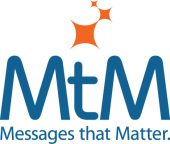I often tell my B2B clients that they need to prove any claim they make. That’s partially because I’m a journalist by trade, and believe it or not, journalists don’t last long if they write stories that lack the facts.
Unfortunately, marketing professionals aren’t as accountable for the stories they tell. Except when their marketing campaigns fail to generate enough revenue, and they get fired. Ironically, one of the reasons their marketing efforts fail is they make unsubstantiated claims that the decision making portion of the brain rejects.
When I take my clients through my business process for positioning, I tell them our mission is to discover the truth about their product, service or company. By seeking the truth, you gather the evidence to support your positioning statement – a short sentence that states a benefit that solves your target audience’s most pressing problem. Your positioning statement becomes the central theme for everything you do in marketing.
Support points prove your positioning statement
Support points unfold your story in more detail, and prove the claim you’ve made in your positioning statement. Detail underneath each support points ultimately drills down to a demonstration that provides the proof necessary to substantiate your claim.
But proving a claim seems to be a foreign concept to many B2B marketers. They apparently think that if you use impressive words – many of them are buzzwords – buyers will follow like lemmings without asking “how do you do it?”
For example, I challenge you to find a company that proves the claim that it delivers “transformational” capabilities. It is bad enough that “transformation” is used by 15 to 20 percent of the B2B software and technology companies I evaluate on a regular basis. But it is much worse that “transformational” claims aren’t substantiated.
Other buzzwords used freely by B2B software companies, yet almost never proven include “work inspired,” “innovative” and “empower.”
Without proof, your target audience won’t listen
Lack of evidence or proof to support these commonly used claims turns off the decision making portion of the brain, according to “Neuromarketing,” a book worth reading because it explains how to communicate effectively, and why.
The brain has three distinct parts, according to researchers, and the way to improve the effectiveness of your communications is to direct your message to the decision maker. The old brain or reptilian brain makes decisions by taking into account input from the new brain (which thinks by processing rational data) and the middle brain (which feels by processing emotions and gut feelings).
The reptilian brain “prefers tangible information over complicated or abstract concepts. It needs solid proof of how your solution will enable it to survive or benefit. Since the old brain can’t decide unless it feels secure, you need to concretely demonstrate, not just describe, the gain your prospects will experience from your product or service – the benefits of a specific cure to their pain – in a way that satisfies the old brain’s need for concrete evidence.
“Remember, when it comes to communicating the benefits of your solution (your positioning statement), it’s not just about value: it’s about proven value!”*
Given the overwhelming evidence that a buzzword claimed but not proven is a formula for failure, why are buzzwords so common in B2B technology marketing? This blog explains several reasons for their use. But none of them are an excuse to make claims you either can’t or don’t prove because your prospects won’t listen to them.
* Neuromarketing, page 22
